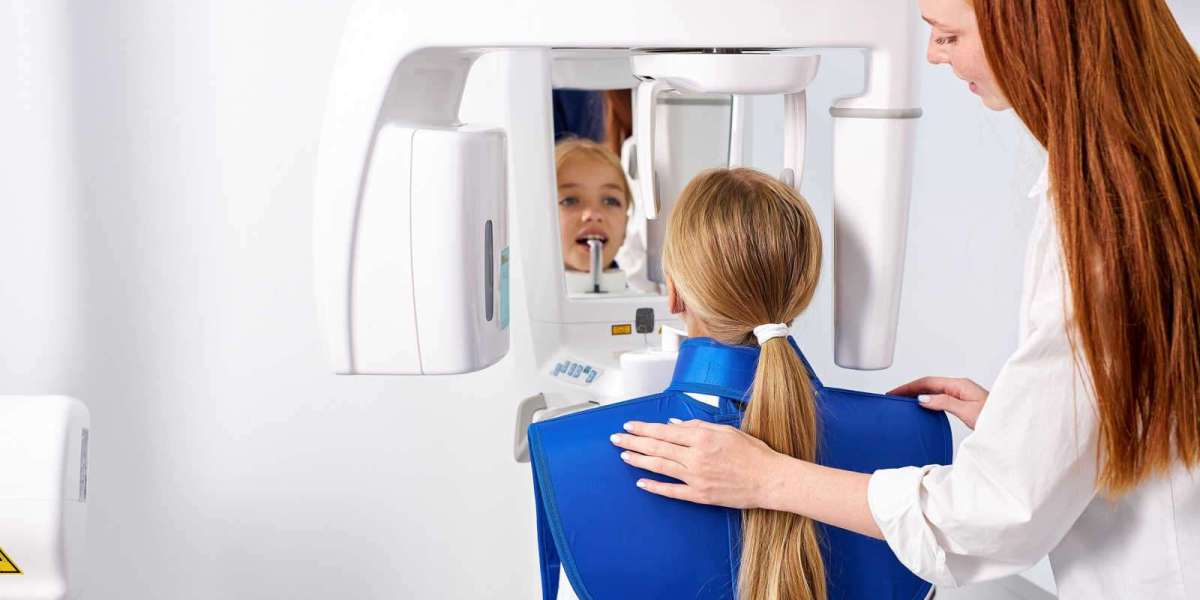If you’ve been experiencing jaw pain, clicking sounds when you chew, or headaches stemming from your jaw area, your dentist may recommend a Dental Panoramic X-Ray in Dubai to help diagnose the issue. While panoramic X-rays are commonly used to examine teeth and jaw structure, many patients are surprised to learn they can also reveal signs of temporomandibular joint (TMJ) disorders and other jaw-related problems. These wide-scope images provide valuable insights into bone and joint conditions that can help guide treatment and alleviate discomfort.
Understanding TMJ Disorders and Their Symptoms:
The temporomandibular joints connect your jaw to your skull, allowing for essential functions like speaking, chewing, and yawning. TMJ disorders (often referred to as TMD) occur when there’s an issue with the muscles, bones, or connective tissues surrounding these joints. Symptoms can range from mild discomfort to severe pain and may include jaw stiffness, limited range of motion, facial pain, earaches, and even neck or shoulder tension.
Since these symptoms can overlap with other dental or musculoskeletal conditions, imaging tools like panoramic X-rays are crucial in determining whether the TMJs themselves are involved.
What a Panoramic X-Ray Shows About the Jaw:
A panoramic X-ray offers a two-dimensional image of your entire mouth, including the teeth, upper and lower jaws, sinuses, and temporomandibular joints. Although it doesn’t show soft tissues like muscles or ligaments, it provides a detailed look at the bones of the jaw and joints. This allows your dentist to assess the size, shape, and position of the TMJs and detect structural abnormalities or degenerative changes that might be causing your symptoms.
For instance, a panoramic X-ray can reveal joint asymmetry, bone erosion, or unusual joint placement—signs often associated with TMJ disorders or trauma-related jaw issues.
Detecting Bone Abnormalities in the TMJ Area:
TMJ disorders can sometimes involve the bones of the joint itself. Panoramic X-rays are helpful in detecting several types of bone-related abnormalities, such as:
Arthritic changes: Osteoarthritis or rheumatoid arthritis can cause bone degeneration in the TMJs, leading to pain and reduced mobility.
Bone spurs or deformities: These can interfere with normal jaw movement and alignment.
Previous trauma or fractures: Healed injuries or unresolved fractures can be spotted on the X-ray and correlated with ongoing discomfort.
While more advanced imaging like CBCT or MRI may be required for detailed views of soft tissues, a panoramic X-ray is an excellent starting point for identifying whether the bone structures are compromised.
Assessing Jaw Alignment and Bite Issues:
Sometimes jaw pain and TMJ discomfort result from malocclusion—a misalignment in how the upper and lower teeth meet. A Dental Panoramic X-Ray in Dubai allows your dentist to evaluate the alignment of your jaws and teeth in one comprehensive image. By doing so, it becomes easier to determine whether an uneven bite is placing undue stress on the TMJs.
Orthodontic issues, such as crossbites, overbites, or underbites, may all contribute to jaw tension and muscle fatigue. The panoramic view helps your dental team create a treatment plan that addresses both the symptoms and the underlying structural cause.
Identifying Jaw Cysts, Tumors, or Infections:
In rare cases, pain in the jaw or TMJ region could be related to more serious conditions like tumors, cysts, or infections in the jawbone. A panoramic X-ray offers a full view of these areas, helping to identify suspicious lesions or abnormal growths that might require further investigation or biopsy.
Such findings may explain unexplained jaw discomfort or swelling and provide a crucial early alert to more significant health concerns. While not common, identifying these issues early through panoramic imaging can make a meaningful difference in treatment outcomes.
Establishing a Baseline for Long-Term Monitoring:
If you’ve been diagnosed with a TMJ disorder or other jaw problem, your dentist may use a panoramic X-ray to establish a baseline image of your current condition. This allows for future comparison to see how the joint or bone structures are changing over time.
Monitoring the progression of conditions like arthritis or jaw joint degeneration is essential in choosing the right long-term treatment strategy. Periodic imaging ensures that therapies such as splints, orthodontics, or medication are effectively managing the condition and not allowing it to worsen.
Limitations of Panoramic X-Rays for TMJ Diagnosis:
While panoramic X-rays provide valuable structural information, they do have limitations. They cannot show the soft tissues of the TMJ, such as the articular disc or ligaments, which are often involved in TMJ disorders. Therefore, if the panoramic image does not clearly explain the source of the pain, your dentist may refer you for further imaging, such as:
Cone Beam CT (CBCT) for more detailed bone analysis
MRI for soft tissue evaluation, particularly the joint disc
Ultrasound for assessing movement and inflammation in the joint
Despite these limitations, a panoramic X-ray remains a crucial first step in screening for jaw and TMJ issues.
When Your Dentist Might Recommend a Panoramic X-Ray:
Your dentist or specialist might order a panoramic X-ray if you’re experiencing any of the following:
Frequent jaw pain or tightness
Clicking or popping sounds during jaw movement
Limited ability to open or close your mouth
Facial pain or headaches with no apparent dental cause
History of trauma to the face or jaw
Signs of bruxism (teeth grinding) and associated wear
Even if your symptoms are mild, early detection and monitoring using a panoramic X-ray can help prevent more serious complications down the line.
Final Thoughts:
A Dental Panoramic X-Ray in Dubai is a powerful tool for detecting TMJ and jaw-related issues, especially when bone structure is involved. While it may not reveal every soft tissue detail, it gives dentists a valuable overview of the joints, alignment, and possible abnormalities that could be causing your pain. If you're dealing with ongoing jaw discomfort or unexplained symptoms in your facial muscles and joints, panoramic imaging can be a vital first step toward diagnosis and relief. By working with a skilled dental professional, you can get the insights you need to start effective treatment and protect your long-term oral health.



